Ep. 42: Wotakoi: Love is Hard for Otaku Vol 1, by Fujita
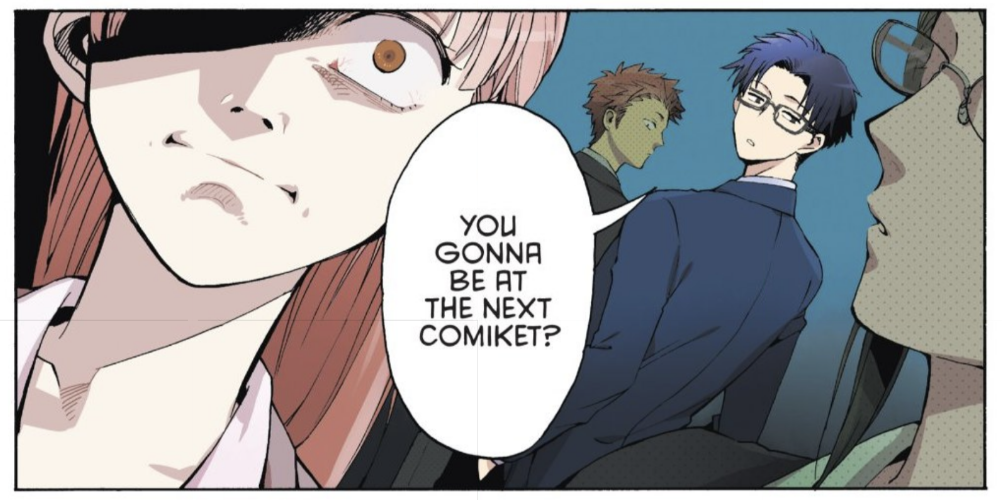
This week, the Mangasplainers challenge the very notion that love is hard for peeps who have geeky hobbies, by reading a book on that very subject! Fujita’s Wotakoi: Love is Hard for Otaku is a treatise on modern dating, but will decidedly NOT an otaku Chip Zdarsky be able to relate? Find out in this episode!
Powered by RedCircle
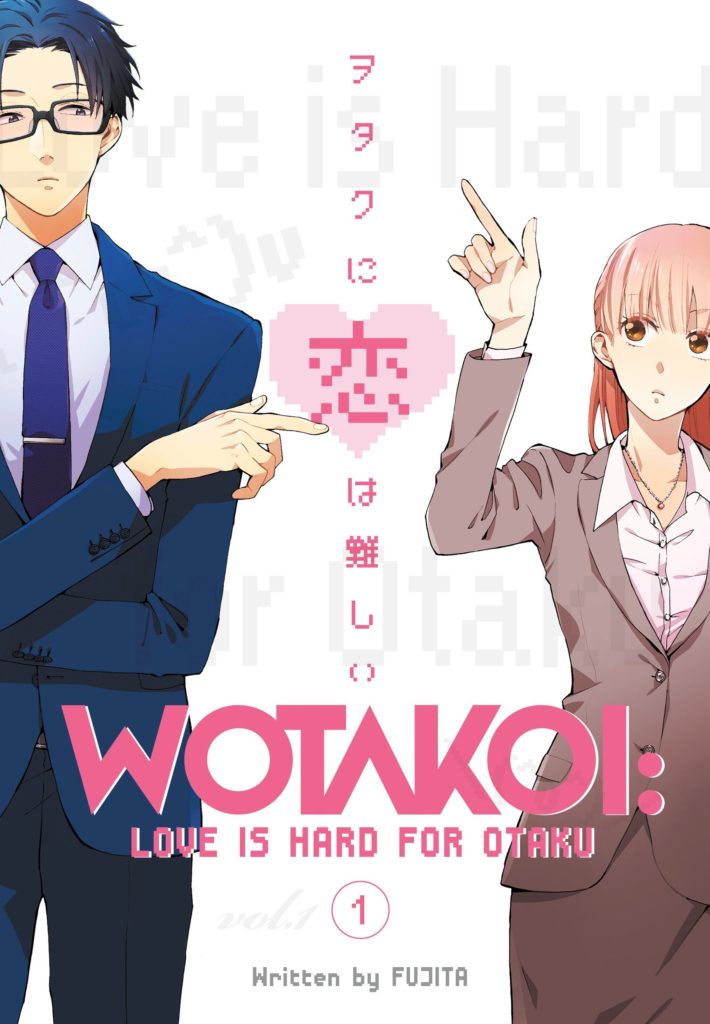
Wotakoi: Love is Hard for Otaku Volume 1
By Fujita
Translated by Jessica Sheaves
Lettering by AndWorld Design
Editor: Lauren Scanlan
Designed by Philip Balsman
Published by Kodansha (Print/Digital)
Show notes by Christopher Butcher and Deb Aoki. Audio editing by David Brothers.
Before we get started:
Deb did a TON of research for this episode (as she always does, even when she doesn’t host), and wrote it all down, and since I’m feeling a bit under the weather today I’m just gonna share it all with you (in addition to my own commentary, and then Deb’s commentary fixing my commentary ;).
[Deb:] Where did the manga Wotakoi come from?
Initially, Fujita began posting the manga on Pixiv (a Japanese online community for artists. It’s like DeviantArt but based in Japan) as a rookie author. Ichijinsha then launched a digital manga magazine in conjunction with Pixiv titled Comic Pool, and started serializing the manga on a regular basis. The manga was selected for Comic Pool because it was the most popular work on Pixiv. On April 30, 2015, Ichijinsha started the publishing the manga in print.
Fujita’s Pixiv page is still online, you can check it out: https://www.pixiv.net/en/users/3165269
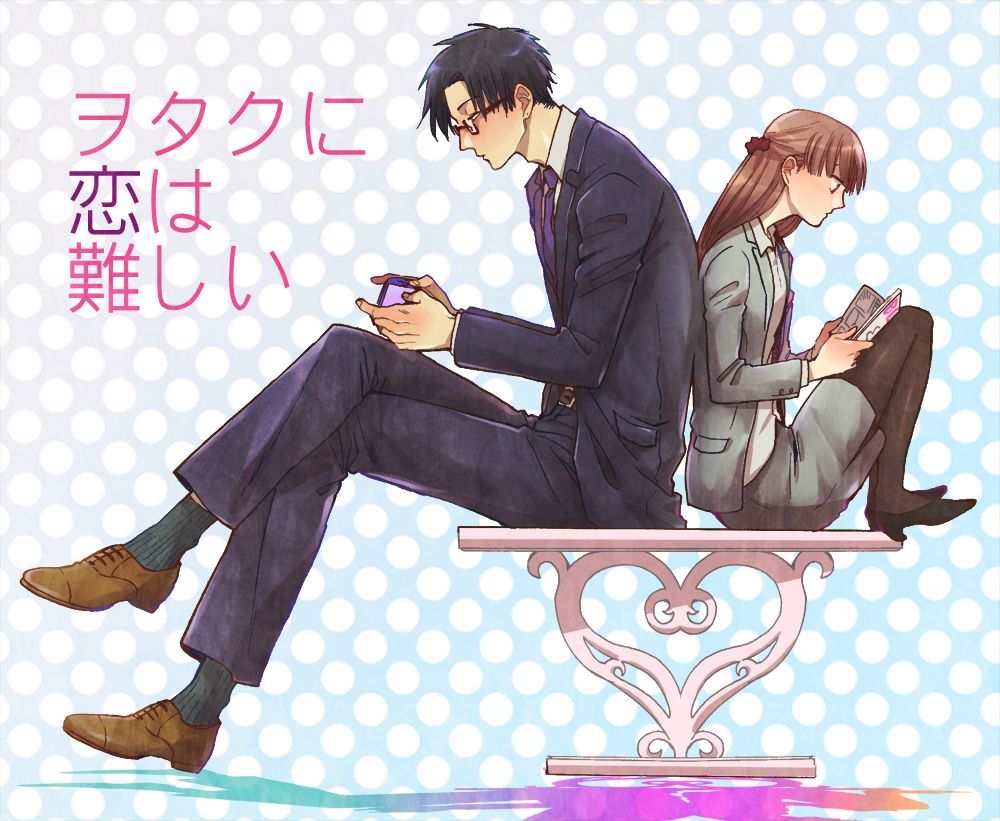
[Deb:] So what’s the deal w/ the title?
The full title of this series is: ヲタクに恋は難しい / Wotaku no Koi wa Muzukashii, or as above, Wotakoi: Love is Hard for Otaku. The word “Wotakoi” is a portmanteau of “Wotaku” = otaku, and “koi”” = love.
[Deb:] So why “wotakoi” instead of “otakoi” ?”
So “wo” を is usually only used as a particle in Japanese grammar, referring to the object that’s being referred to. It’s not typically used to spell out “words.”
e.g Taro ate sushi.
tarō wa sushi wo tabemashita.
たろう は すし を たべました。
太郎たろうはすしを食たべました。
Here, “wo” comes after “sushi”, and this tells us that sushi is the thing that was eaten.
This is lifted from: https://8020japanese.com/particle-wo/
However, in the case of “wotaku” – it’s spelled in katakana, a phonetic Japanese alphabet which is typically used to denote ‘loan’ words, or words that come from other languages. ヲタクに恋は難しい with “wo = ヲ” – In modern times, katakana is also occasionally used for ironic or stylistic purposes, or to denote ‘outsider’ or ‘new’ ideas, such as in ヲタク (wotaku).
Chris here: The other Japanese phonetic alphabet, hiragana, is conversely used to phonetically write out Japanese words/sounds that are native to Japan. EXCEPT, some loan words have been around so long, or are so integrated into Japanese culture, that they’re written out in hiragana! used for domestic words like how the word tabaco (Spanish) or tobacco (English) is written たばこ, in hiragana!
[Deb:] So why does “wotakoi” use “wo” this way?
So yeah, the katakana character wo = ヲ has been depreciated in everyday Japanese. It basically isn’t used any more, it has to do with the end of WWII and stuff, way too much detail to get into here, but it was a somewhat uncommon character before the war, and now it’s just not used almost at all… Specifically related to this manga: Otaku have started calling themselves “wotaku” with the out-of-fashion character ヲ, in a self-deprecating sense, to imply that a “wotaku” is more twisted/outsider than (general) geeks. It has a more decadent and derogatory meaning than just “otaku.”
So, with alllll of that out of the way, let’s GET INTO THE PODCAST!
1:30 The description of Wotakoi, from Kodansha’s website:
Narumi Momose has had it rough: now age 26, every boyfriend she’s had dumped her once they found out she was an otaku, so she’s gone to great lengths to hide it. When a chance meeting at her new job with childhood friend, fellow otaku, and now coworker Hirotaka Nifuji almost gets her secret outed at work, she comes up with a plan to make sure he never speaks up. But he comes up with a counter-proposal: why doesn’t she just date him instead? In love, there are no save points.
Kodansha
Deb adds:
As we find out in volume 1, Narumi is far from the only “closeted” otaku at her office. Her gruff but dependable supervisor Taro Kabakura is actually a hardcore manga and anime fan. Her cool and mature coworker Hanako Koyanagi is actually a semi-famous cosplayer who specializing in cross-play. Oh, and did we mention that though they often bicker at work, Kabakura and Koyanagi are have been dating and living with each other for quite a while now? Well, now you know.
Deb Aoki, further describing Wotakoi: Love is Hard for an Otaku
4:45 We come back to this idea a lot this episode: Wotakoi is actually is pretty close in tone, and maybe even humour, to Monthly Girls’ Nozaki-Kun, which we covered on episode 18. But we really dig into this episode later.
7:40 At the risk of putting words in David’s mouth, as he was talking, I immediately went to this sketch from College Humor, about how nerds and jocks basically have a lot in common.
I think this is funny, and I get this, it’s an ‘essential’ truth that we’ve only realized in society in the past decade or so, but… Yeah. I dunno, I’d love to hear from the audience on this one, hit us up in the comments with your thoughts.
11:15 So yeah, after our CITY episode, David sent us this video from the Nichijou anime, about the fear/persecution around boy’s love manga. I actually did put it in the show notes, but it’s pretty darned good, so let’s include it again:
Also, I’m sure we’ve covered this before, but the word (in Japan) for “BL Fan” is “fujoshi” which roughly translates to ‘rotten women.’ So yeah, if you’re into BL manga, light novels, goods, etc., you’re rotten. Most fujoshi have reclaimed this word, and use it to self-describe themselves now… it doesn’t quite have the power it once had, but I’ve heard this name spoken with disdain in my life, for sure.
For what it’s worth, the male version of a fujoshi is a ‘fudanshi’, and there’s even a reasonably funny manga about it:
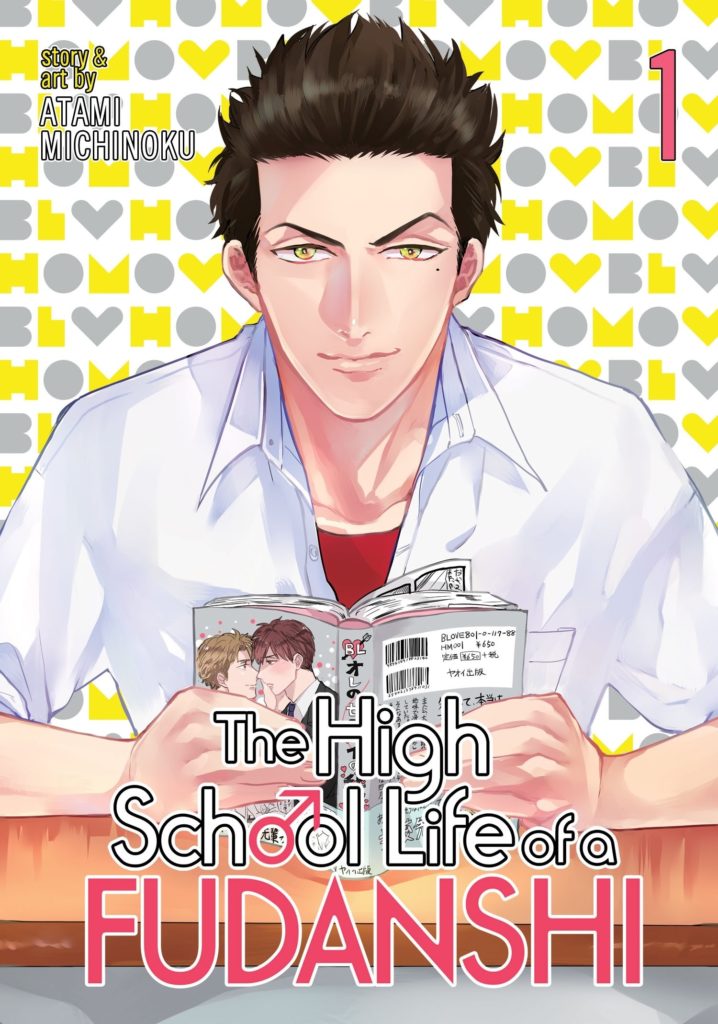
15:00 Chip did not like it.
15:36 He’s right, this manga does not include much by way of backgrounds, almost at all. You’re lucky to get an establishing shot. This changes, and gets better as the series goes on, but it’s kind of brutal in the early pages especially. Here’s the first 4 pages. Can you tell when they switch to being at the bar?
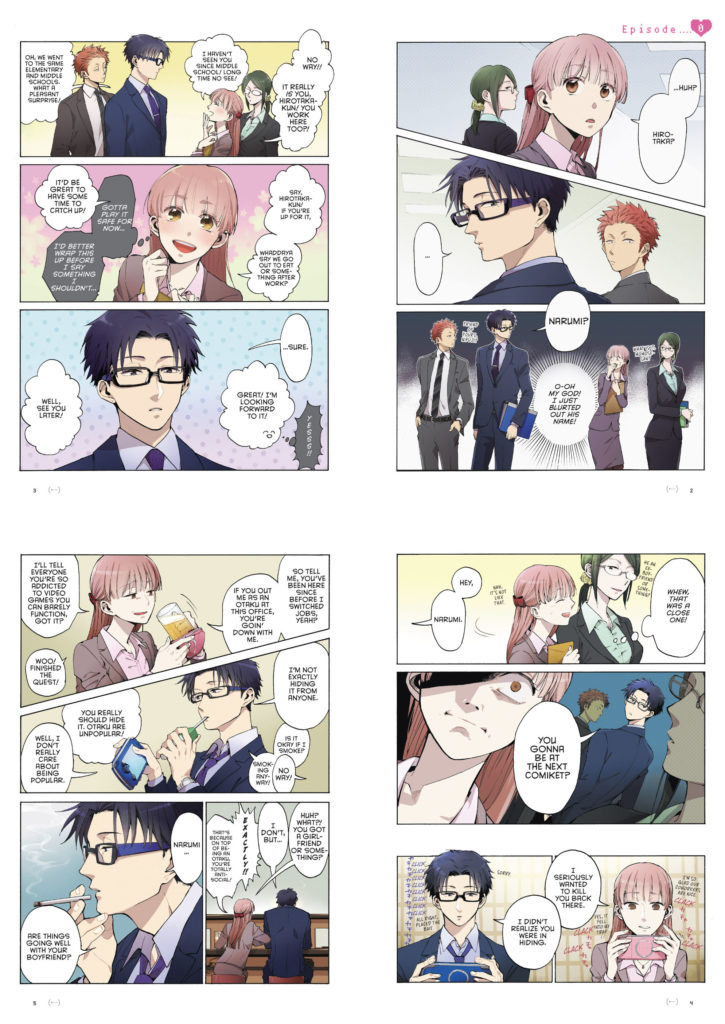
[Deb:] We do see a few more interior backgrounds later in the series, such as this scene where Narumi looks over Hirotaka’s figure collection, which has a lot of busty gals, and starts to feel a little… insecure.
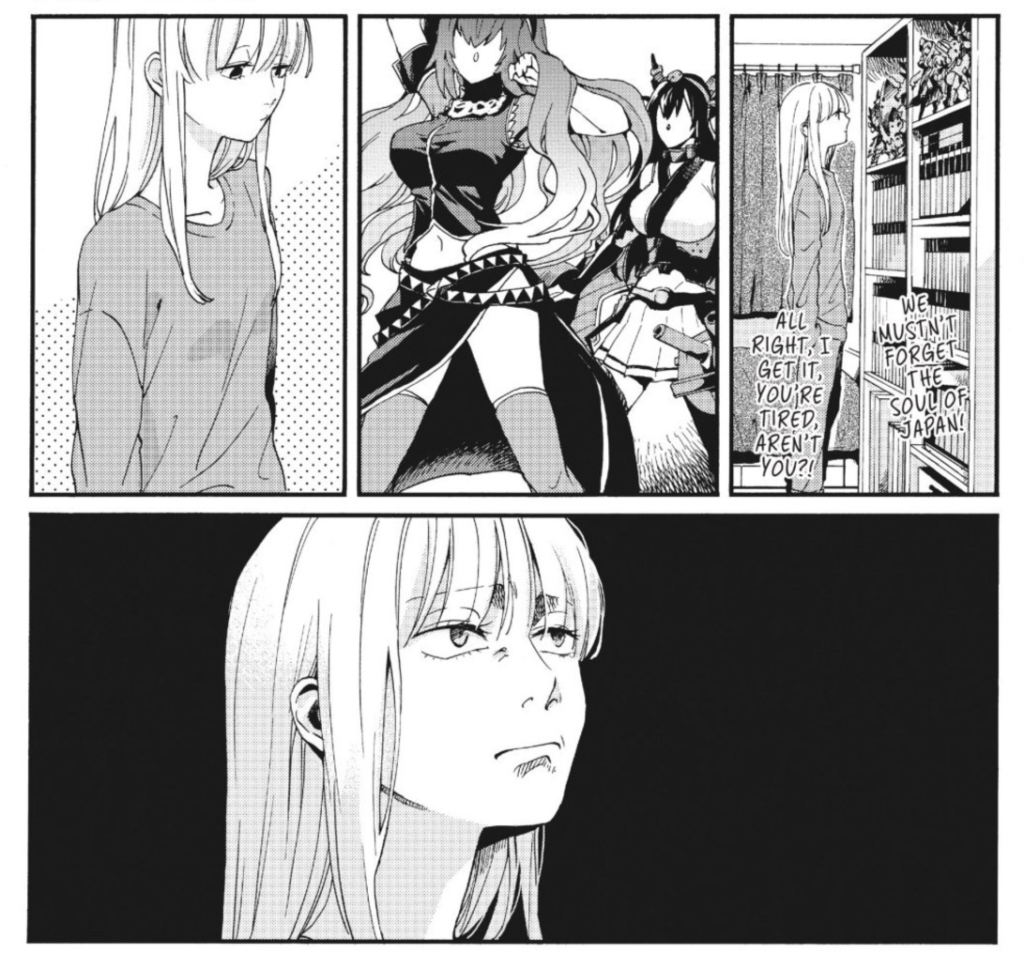
16:00 The practicing-his-winking gag is super cute, agreed. It’s a follow-up to a story in which this character literally can’t wink, and doesn’t quite realize he’s blinking.
18:00 Yeah, man. I gotta be honest, I’ve been to Hatsune Miku headquarters in Hokkaido, and worked on Hatsune Miku books, and even I did not get this reference to the song “Blow Up and Die, Happy People.” And like Deb, I barreled through, didn’t dig in, and then read the notes at the end of the volume really closely to ‘get it’. I find that’s how I read a lot of otaku stuff actually, getting a sense of it and then filling in the gaps later. Trying not to let stuff distract me. It’s interesting that this clearly didn’t work for Chipper.
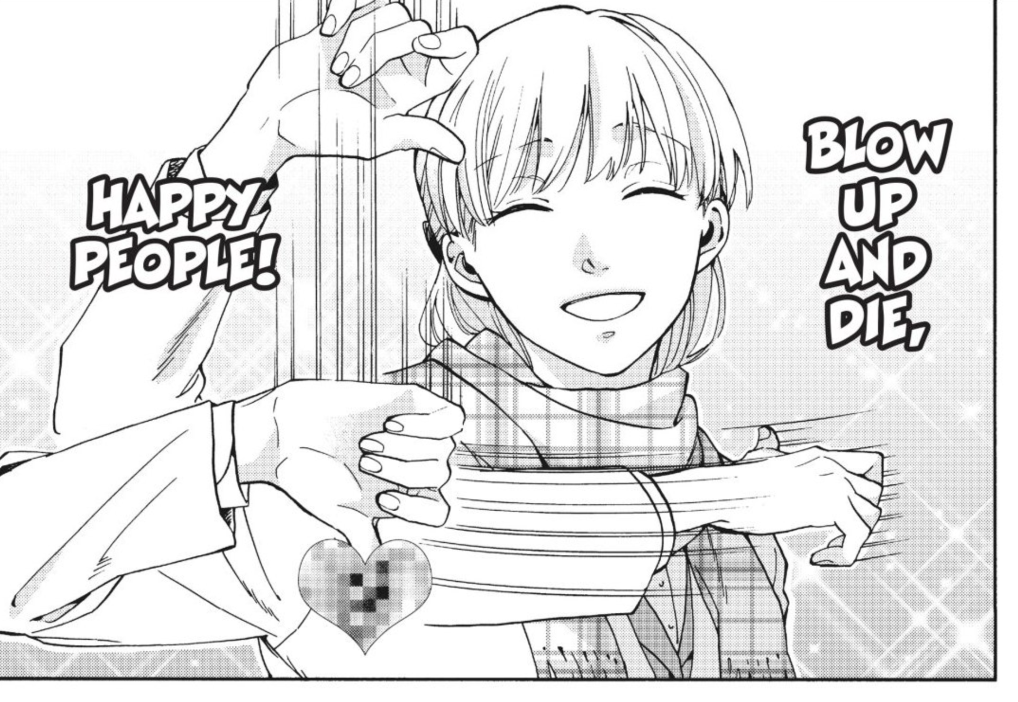
So about this whole Miku thing, here’s a very abbreviated explanation. I could’ve written 3 times as much, easily.

Hatsune Miku is a fictional character, a green-haired 3D pop idol whose voice is generated by a piece of music-making computer software. She’s called a ‘vocaloid’, and using her voice (or other vocaloid voices) became an easy and popular way for digital musicians to add voices and lyrics to their otherwise instrumental songs (if they purchased the software), mostly in the electronic/techno/edm/trance music space. It’s basically a massive, massive subculture that only breaks into the mainstream in the weirdest ways, like when she was on the late show with David Letterman.
Because the Hatsune Miku voice is some manner of copyright-free (I think it’s creative commons, something like that? Read the wiki for details) people are welcome to create their own songs, released for free, using Miku’s voice and making her say… Well, whatever they want. Which brings us to the song リア充爆発しろ! (Riajuu Bakuhatsu Shiro!), or “Blow Up and Die, Happy People.” Released on Japanese video sharing service Nico Nico Douga, the short song is about how happy people in love that have their lives together are garbage, not even really people, and they should be exploded. It’s clearly written from a disgruntled otaku POV, and it’s been viewed 748,000 times (released in 2009). The internet has changed a lot since then, society probably has too.
Anyway, you can see the full translated lyrics on Fandom, and you can watch the original video on NicoNico.
Here’s the best part of the Hatsune Miku Wikipedia entry: “In January 2020, Hatsune Miku was announced as a performer at Coachella 2020 in Indio, California, which was later cancelled due to the COVID-19 pandemic.[110]“
FWIW, I like the song she sings on Letterman better than the angry otaku song.
18:39 That was: “Chip’s a Fucking Normie.” We censor it so that Apple won’t shadowban our podcast with an ‘explicit’ rating. :-/
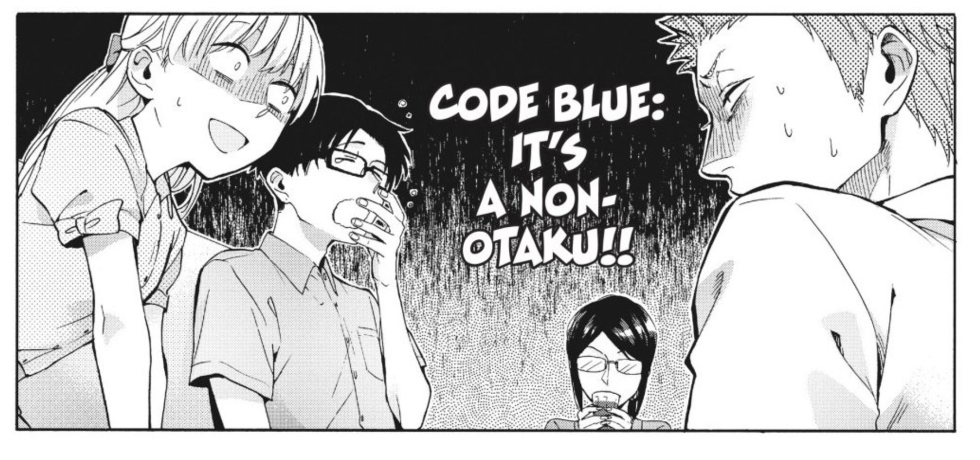
20:30 We are kinda skint on romance books. I will say that my last pick of the year, revealed at the end of this episode, is a romance book at least.
22:10 I think David and Deb hit the nail on the head here, talking about how these characters come out of Japanese anime/manga personality tropes. Like I said, I’m kinda under the weather and not gonna dig into all the tropes here, but Deb did have this cool bit written up about tsundere characters.
[Deb:] Have we talked about what “tsundere” means?
Tsundere (ツンデレ, pronounced tsoon-deh-reh) is a Japanese term for a character development process that describes a person who is initially cold or prickly (and sometimes even hostile to others) before gradually showing a softer, friendlier side over time (and often looking endearingly embarrassed that their soft side is showing). The word is derived from the terms tsun tsun (ツンツン), meaning to turn away in disgust, and dere dere (デレデレ) meaning to become ‘lovey dovey’.
So in Wotakoi, Koyanagi is a tsundere.
There are lots of other trope-y character types in this manga too. Check out this massive list of anime/manga personality tropes: https://photos.app.goo.gl/UkyrbZZzixdPu1pr7
22:25 Yeah, I didn’t catch that, but David did. The hair colours are very similar between the main characters of Wotakoi and Nozaki-Kun, as are the broad strokes of their personalities.
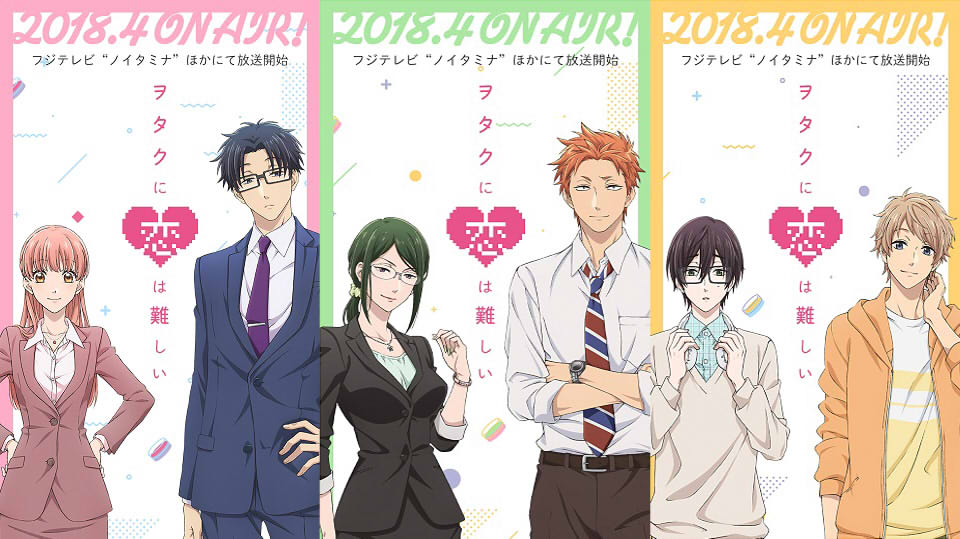
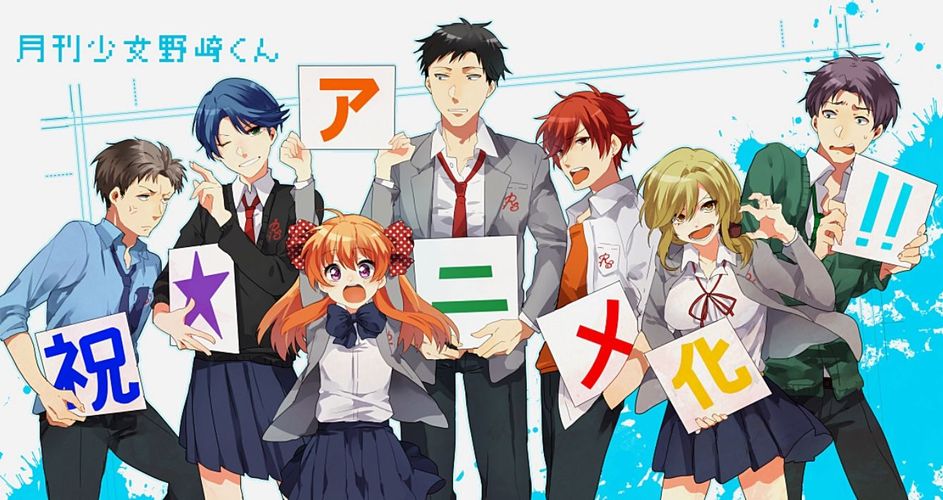
32:03 So this cute illustration from the bonus material of Hirotaka pushing away Narumi that Deb mentions is great.
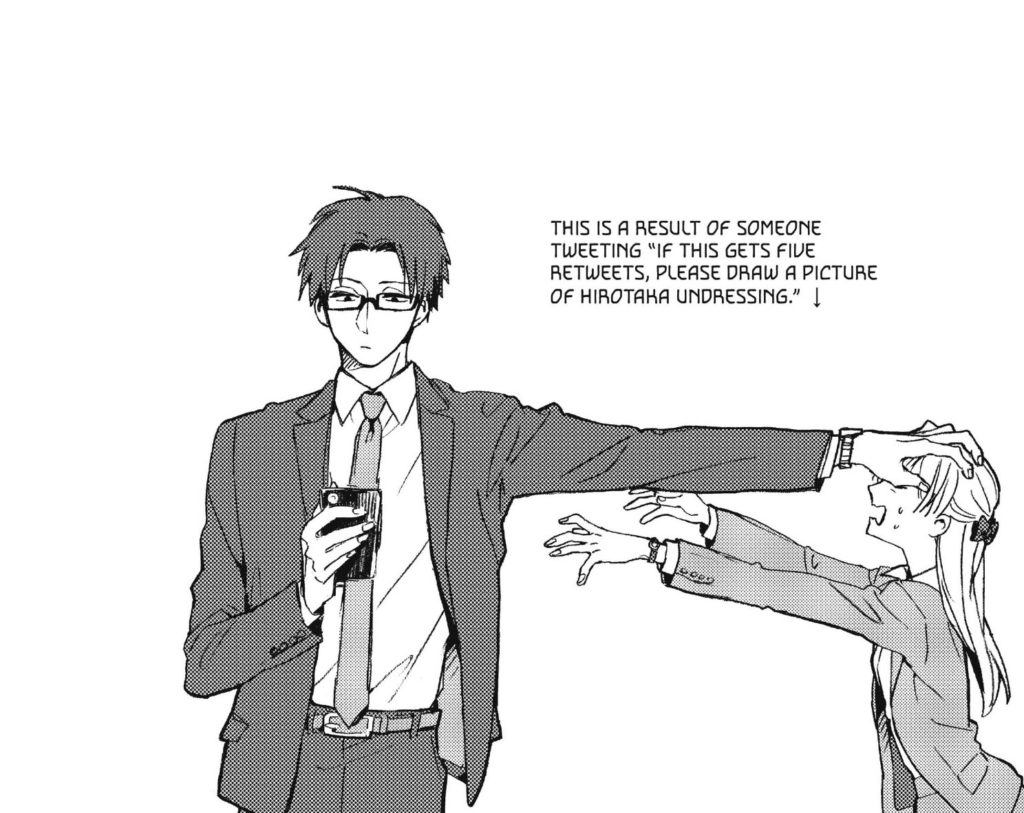
It’s interesting too, because it looks like this is a re-inked ‘final’ version of the original illustration that appeared on Fujita’s Pixiv account! It was neat that this image got called out, because it’s one of the few with a direct comparison image that I can show you.
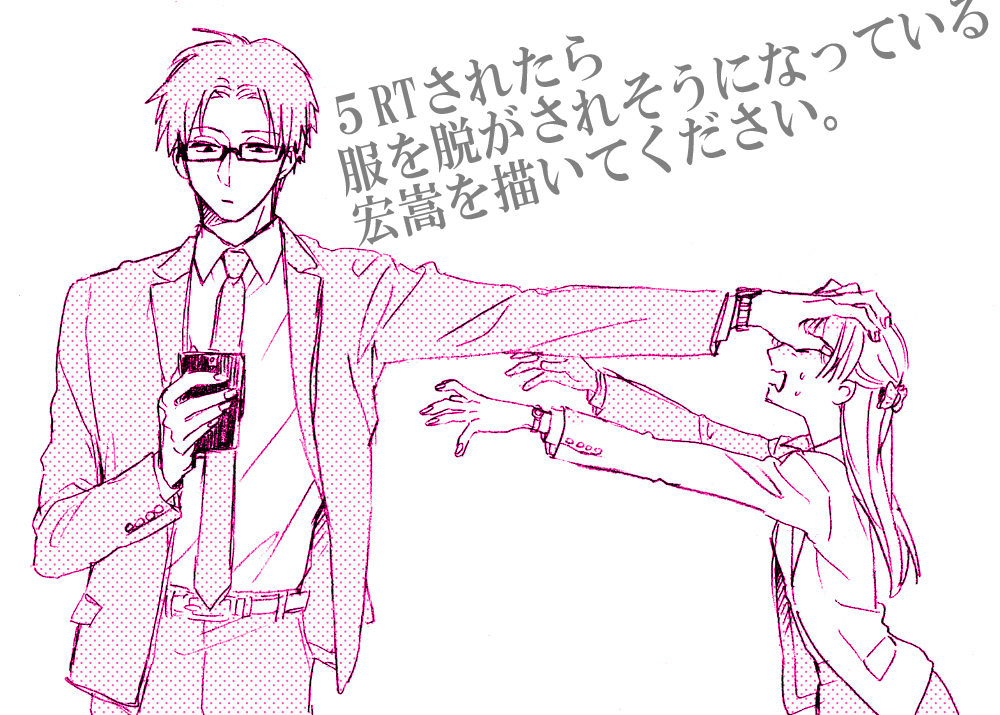
Deb also mentions these profiles on page 156, how the main Wotakoi characters wake up in the morning. Giving insight into the characters, sketching the characters, developing the characters… outside of the story. And yeah, this is the exact page that I reference that’s retroactively inserted into the anime at a point before page 1 of this manga. I think it’s kinda cool to see the author making it up as they go along, fleshing things out.
[Deb:] It’s also a cute touch to see Kabakura’s hand in Koyanagi’s panel as he lifts the blanket off of her.
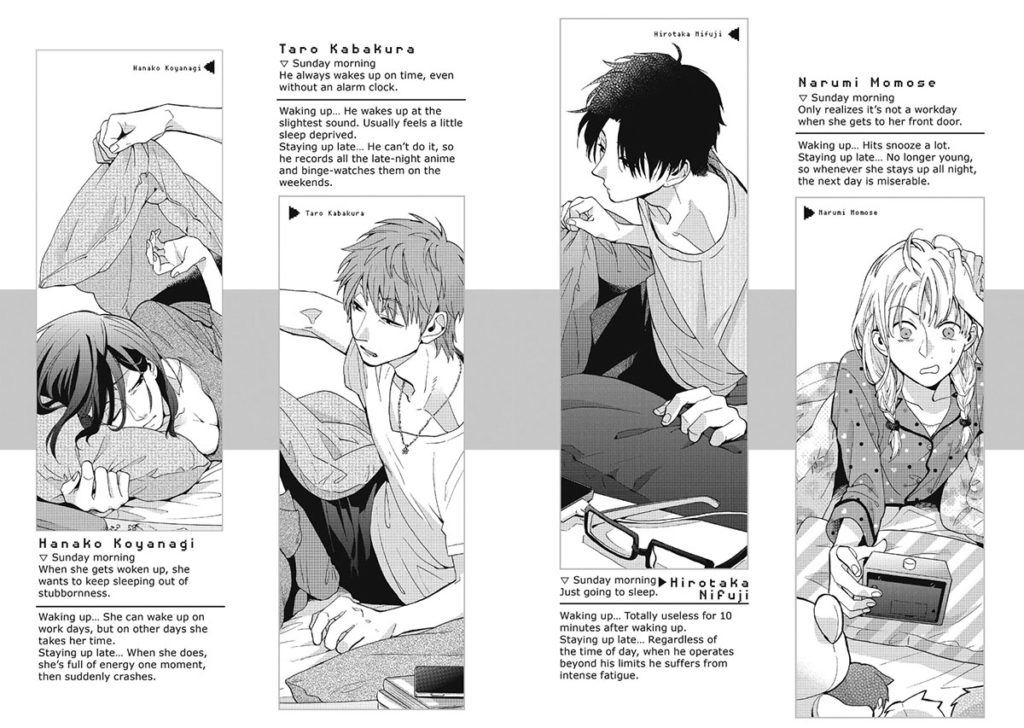
33:03 Jonathan Hickman is an American comics artist and writer. He is known for inserting a lot of infographics into his work. His creator-owned and illustrated work tends to be even more info-graphic and design-focused, like his very early work for Image Comics The Nightly News.

But even his most recent run on the X-Men comics features infographics that provide deeper material about the world and story. I thought they were a great addition to the story, personally.
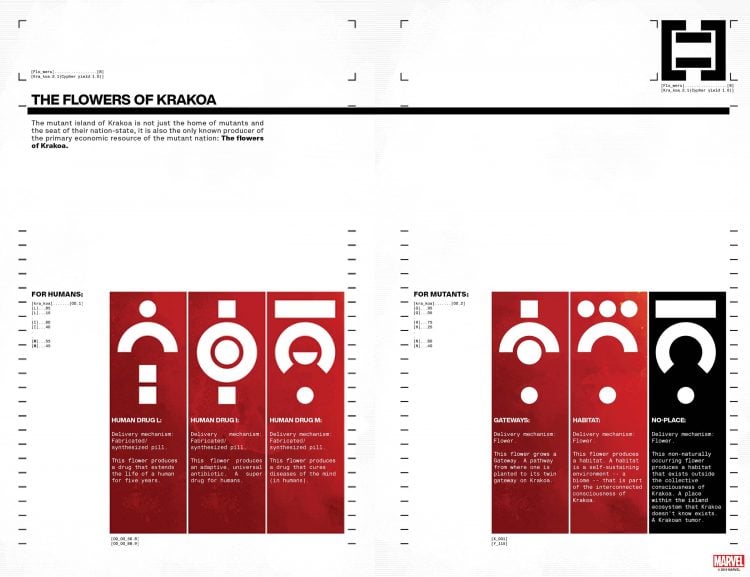
For hardcore otaku, he’s a bit like Masamune Shirow (Ghost in the Shell) early in his career, adding tons of ‘notes’ and releasing ‘worldbooks’ and things like that.
37:12 [Deb:] Koyanagi and Kabakura are always bickering, which leads HIrotaka (and maybe readers who aren’t used to this type of relationship dynamic in manga/anime) to ask, “What’re you guys like when you’re alone?”
41:24 We’ve mentioned this one so much, we’re just gonna have to read it in season 3. Kaiji is also known as Gambling Apocalypse: KAIJI, by Nobuyuki Fukumoto. As David mentions, it’s in print now thanks to the good folks at Denpa Publishing.

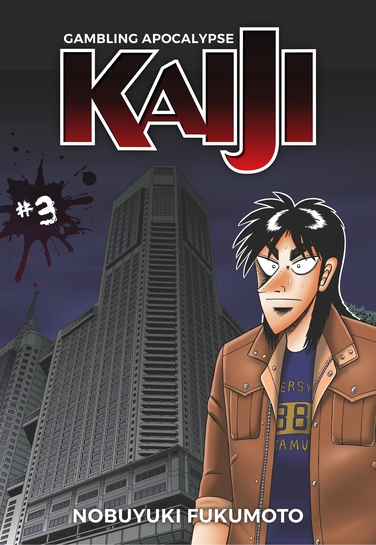
43:30 Tokyo Big Sight is the biggest convention space in Tokyo. It’s located on the man-made island of Odaiba in the middle of Tokyo Bay. All of the biggest nerd events (as well as normie-bullshit events) are held at this convention centre. Or were, until it was taken over by the Olympics for a few years. It should be back to more-or-less normal by next year, assuming anything will ever be normal again.
47:30 Assistant Editor’s Month was a semi-regular feature at Marvel Comics in the ’80s that would feature humourous additions to the regular covers, funny back-up stories, or even entire ‘gag’ issues. Assistant Editor’s Month brought us such classics as “Aunt May and Franklin Richards team up to stop Galactus” and “The Avengers go on David Letterman.” Weird, two Letterman references this week.
48:05 I wish I had been thinking about this more clearly, because a much better answer to David’s question would go something along the lines of “While I think there’s a connection between Wotakoi and Tokyo Tarareba Girls by Akiko Higashimura, there’s a much bigger connection between Wotakoi and Higashimura-sensei’s prior work, Princess Jellyfish.
In Princess Jellyfish, a cross-dressing boy becomes friends with a share-house full of hyper hardcore-otaku women, each with their own ‘otaku specialty’ (their words), and man, if that isn’t indicative of the same culture being portrayed in Wotakoi, then nothing is, y’know? Anyway, Princess Jellyfish is a lot of fun, definitely go check it out.
50:22: I kinda dropped this tidbit and moved on, but Fujita specifically mentions that she based the characters of Wotakoi at least partly on her friends. She mentions this at the end of volume 1 (the first half of the book that makes up the omnibus volume 1 here) in the omake (bonus material):
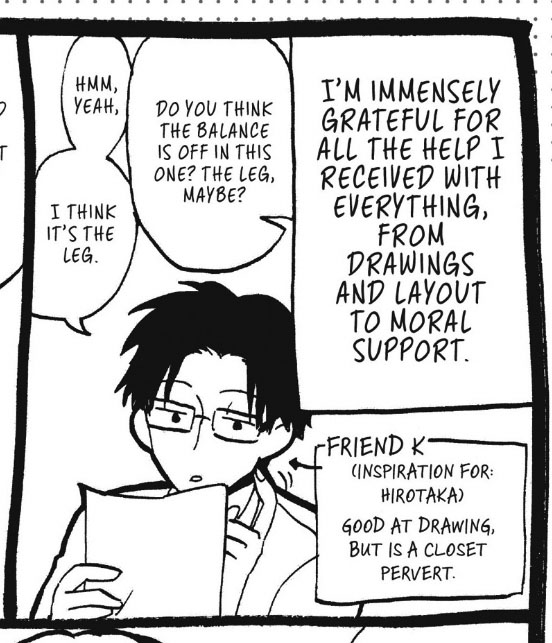
53:40 It’s funny, because all of the Christmas movies on the Hallmark Channel are kind of like this right now. A warm, unrealistic bubble bath of “wouldn’t it be nice if romance worked out like this, but come on, who are we kidding?” content.
56:17 Psychedelic Trance Music. It’s… it’s pretty great.
58:11 Here’s those spreads that David talks about, starting with page 258. This actually sparks one of the last big back-and-forths of this episode! Remember to read right-to-left.
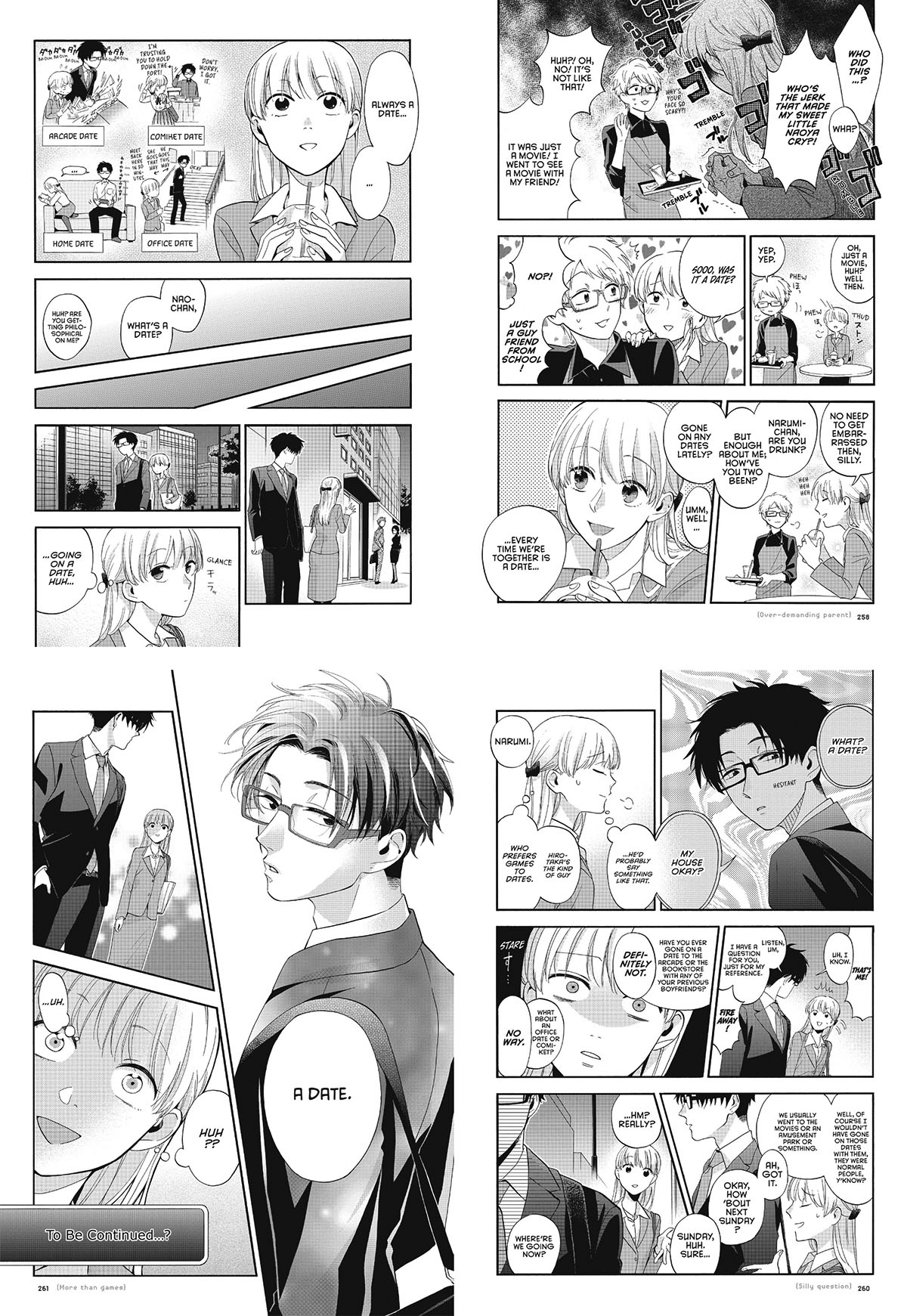
Jumping ahead a little: Yeah, I think that this is just a case where a less-accurate, more conversation translation could’ve smoothed over some of the rough edges in the translation. But I also know that doing that is generally a no-no when it comes to ‘translating’ manga. Many editors (and even some publishers) are very literal, whatever it said in each word balloon (sentence) is what it needs to say in English. But I think that page 258 is a VERY clear example of a time when moving some dialogue around, or even smoothing it out a little, would’ve addressed a rough spot in the manga that I think Chip was right to call out. And the whole manga reads like this to me, accurate, but a little unnatural, and again, it’s VERY different in the subtitled translation of the anime, a completely different ideology is present in that translation. I bet hardcore otaku hate it.
59:11 “Let’s wrap things up.” Lol. No, I will go on to tell two more full stories. As will Chip.
1:02:00 I’m referring to a Kotatsu, here. A ‘very Japanese’ item, which a table with a blanket built in and a heater underneath that keeps your feet warm in winter months. I don’t know why I brought up a kotatsu, other than I was trying to think of something ‘very Japanese that Chip might not understand’, and I wanted him to ‘misunderstand’ it in the dumbest way possible. I was very proud of myself for this one, and clearly should not have been.
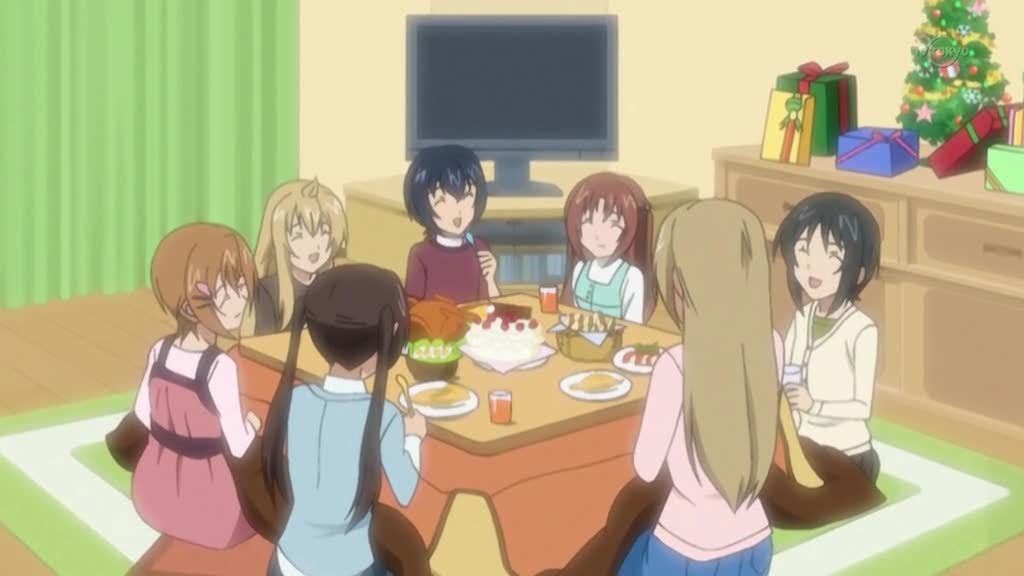
1:04:20 The point being, Amazon Prime Video comes free with the subscription you get to buy discount diapers or whatever, and Crunchyroll is a dedicated anime streaming channel for hardcore anime fans, and maybe the differences in those two audiences extend to how “tight” these subtitles are translated.
1:06:30 This scene Deb is mentioning was really funny in the anime.
Heh, sorry, I don’t have later volumes so I can’t include images from these funny moments, my bad.
[Deb:] In N. America, the first season of the Wotakoi anime is streaming on Amazon Prime. Here’s a trailer so you can get a taste of how the manga was translated into anime:
A new-ish OVA (original video animation, something that wasn’t released through weekly televised episodes) of Wotakoi was recently released too, as a bonus extra DVD when fans bought the Japanese edition of Wotakoi Volume 11 manga (This volume is basically the last of the series. It came out in October 2021 in Japan). It’s kind of a mystery to me that the Wotakoi anime series hasn’t been picked up for English DVD release yet….
Also, did you know that there’s a live-action version of Wotakoi?
1:09:22 I’m not gonna link Prison Funnies. Google it at your own risk…!
1:10:48: THE BREAK!
Alright, it’s time to choose books, our LAST three books of season 2, before we go into AKIRA Volume 3!
David’s pick is The Blood Red Boy, by Minami Q-ta, published by Starfruit Books. It’s also available free to read though Azuki.
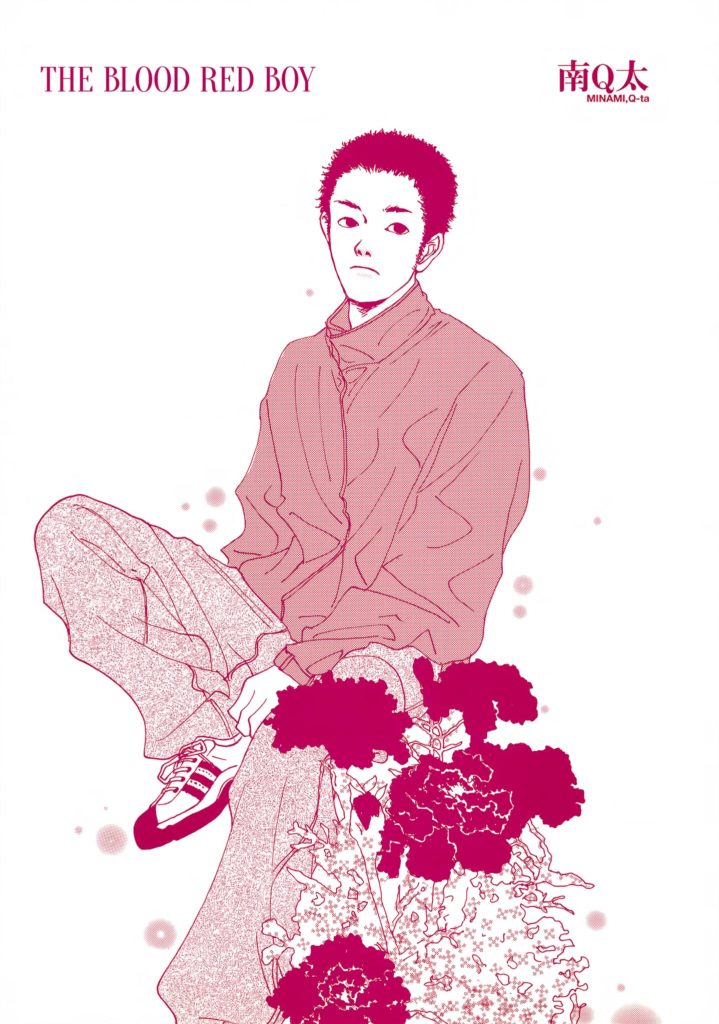
Deb’s pick is the heart-wrenching shonen manga about art school, Blue Period, by Tsubasa Yamaguchi, published by Kodansha.

Chris’s pick is the show’s first ‘official’ boy’s love/BL title, Our Dining Table by Mita Ori, published by Seven Seas.
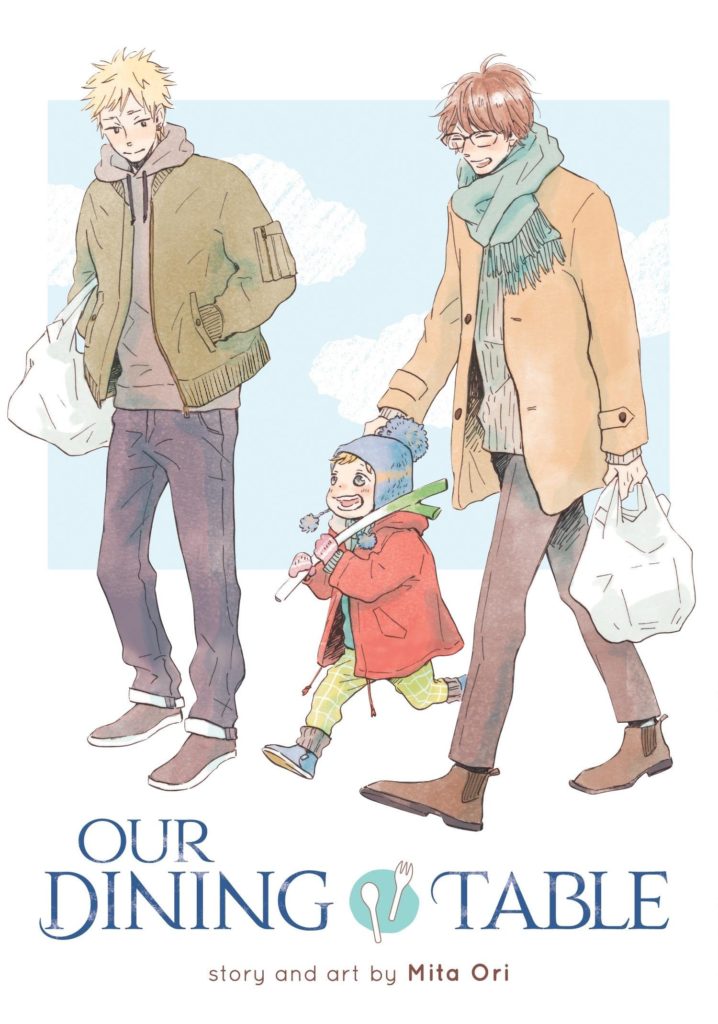
…and that’s this week’s episode!
Thanks again for listening and honestly thanks for commenting too. It’s all in good fun, hope you weren’t offended.
Find a comic store near you at comicshoplocator.com
Check out Mangasplaining theme song composer D.A.D.S. on Spotify

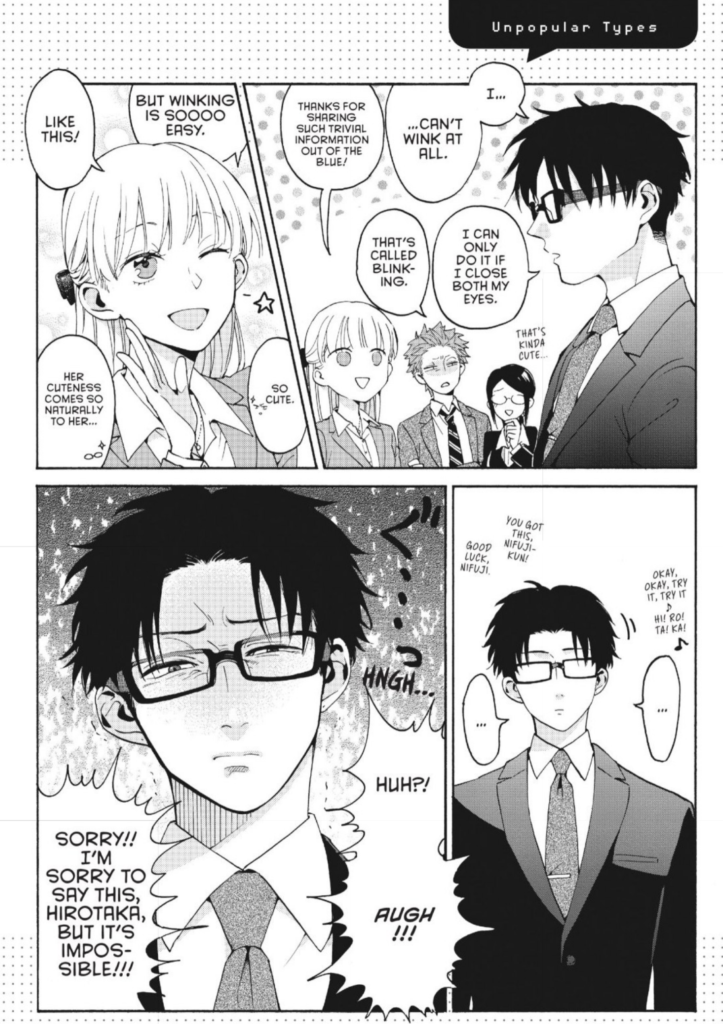
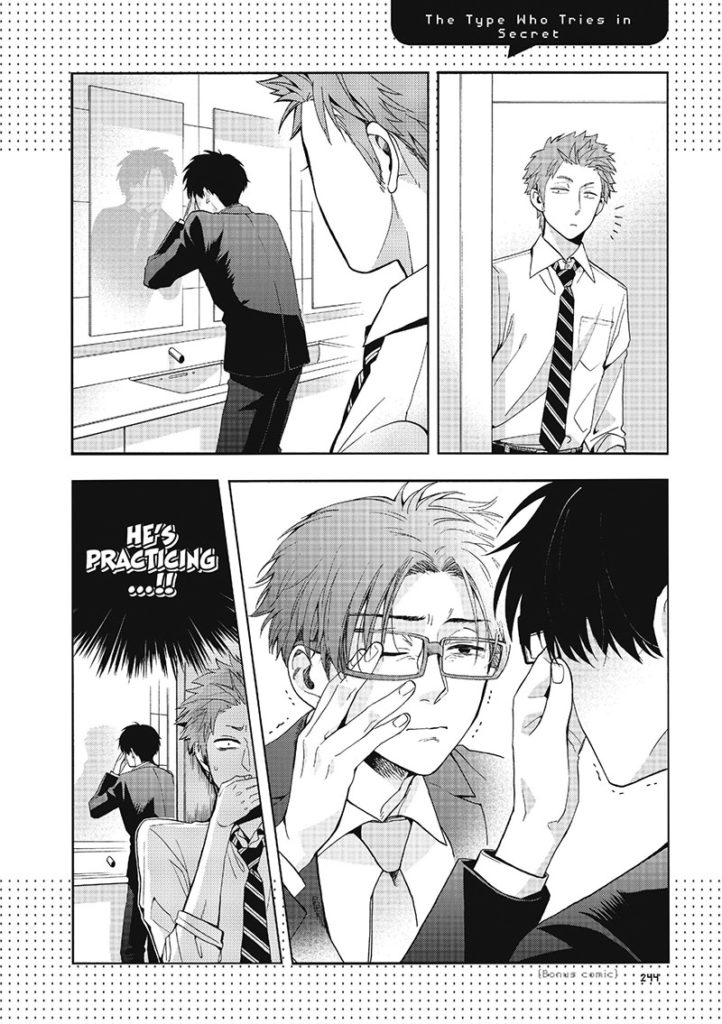


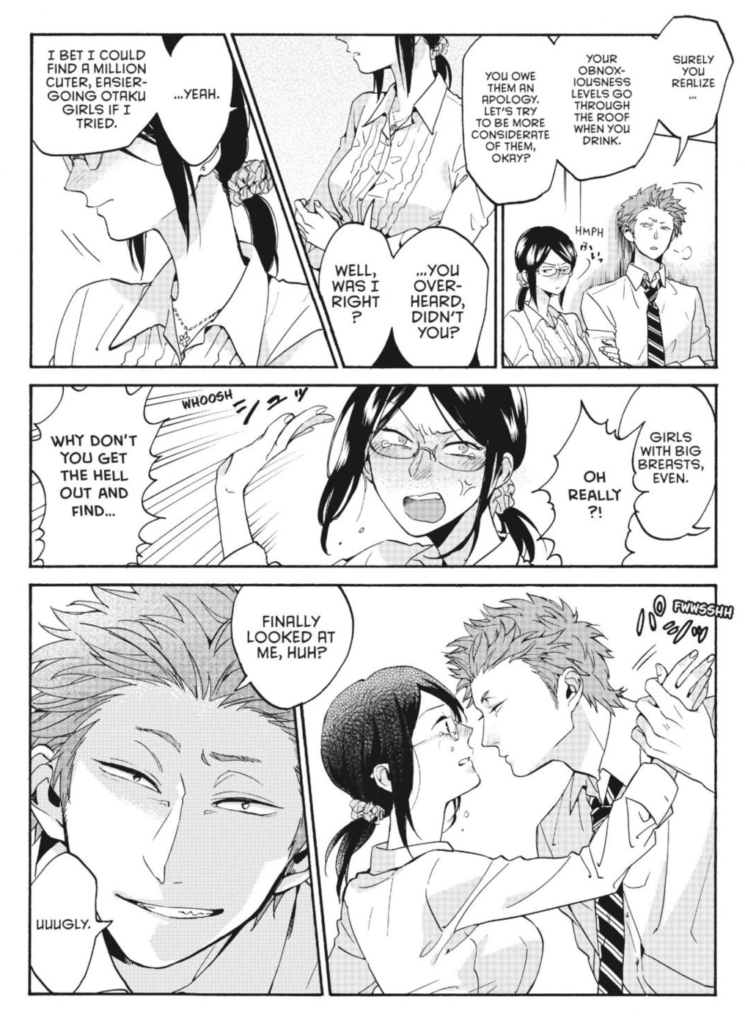
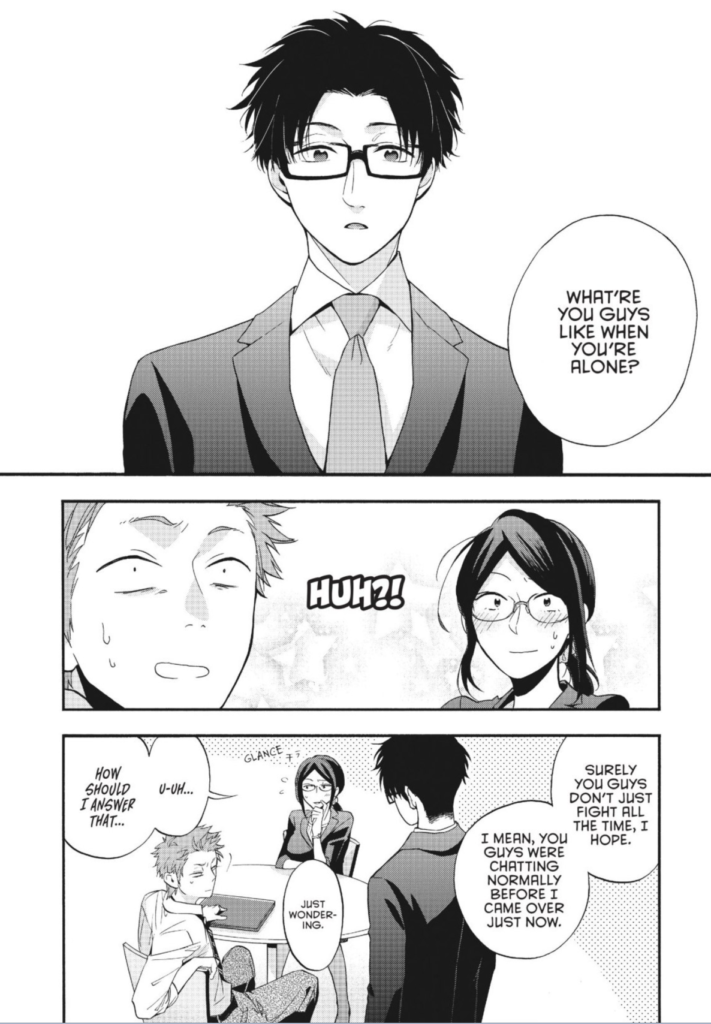
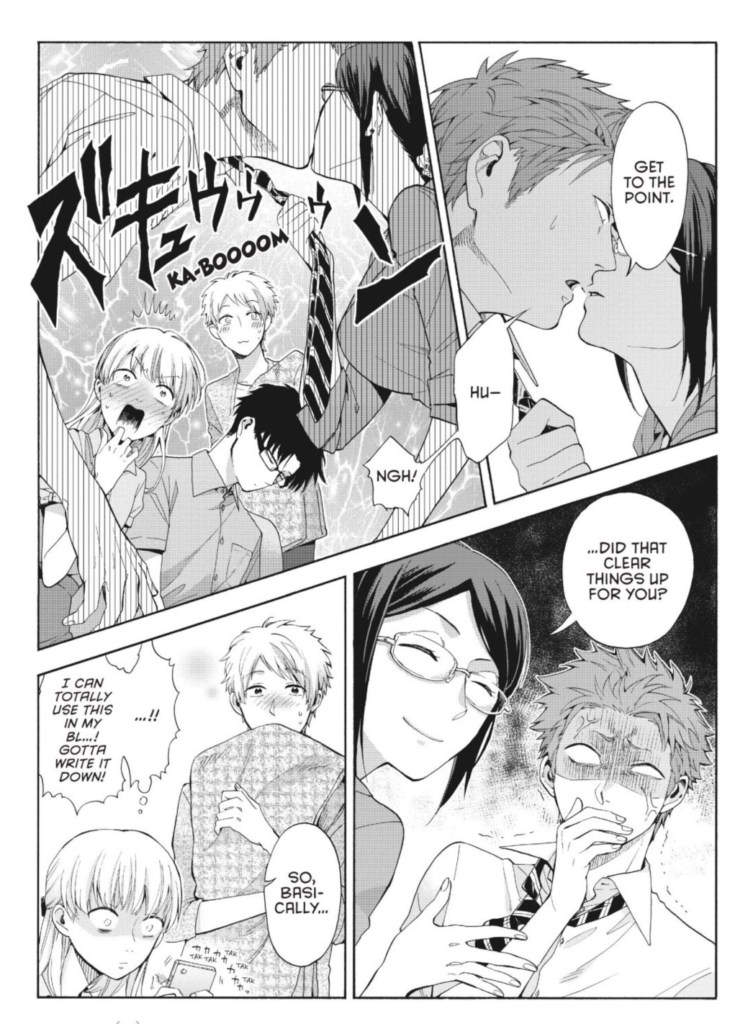


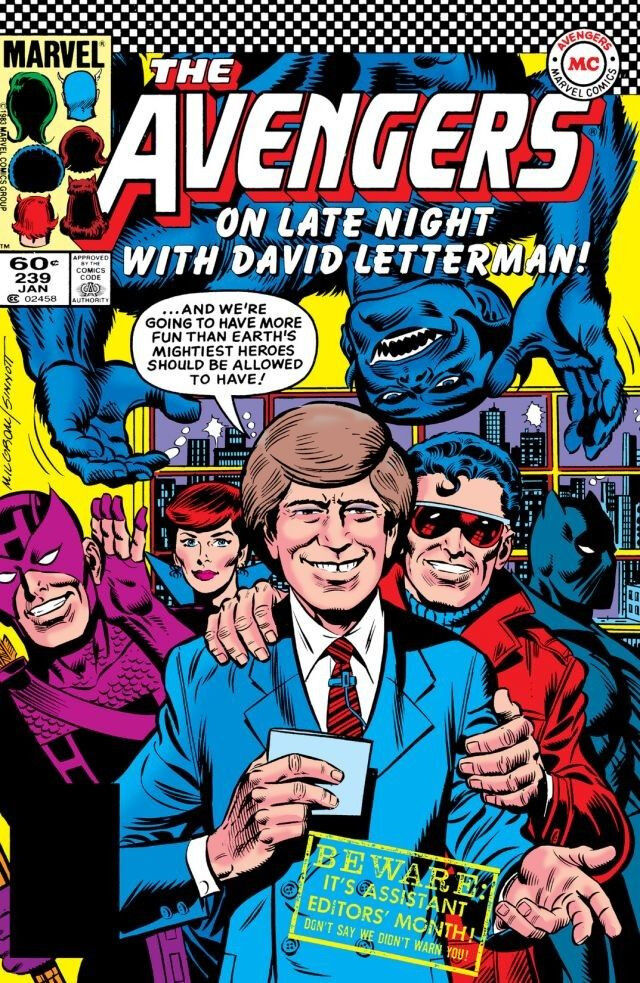
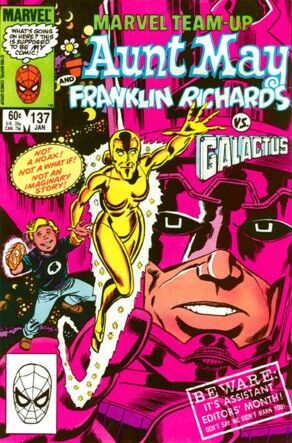
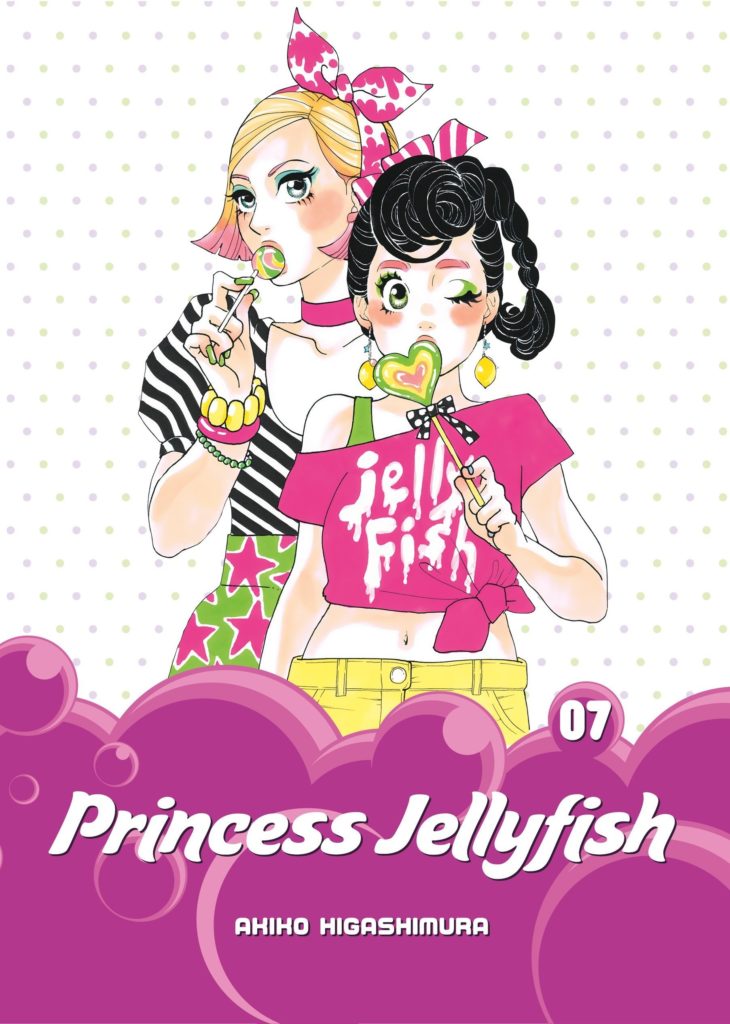
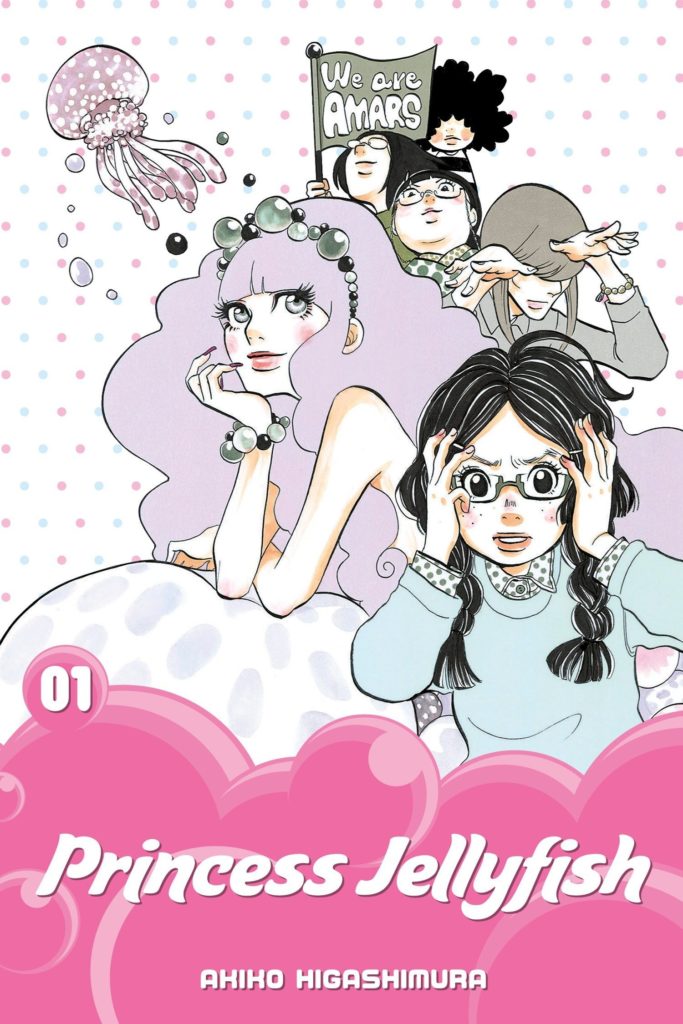

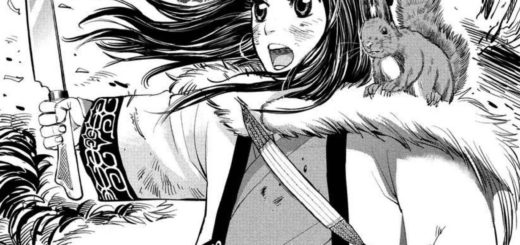
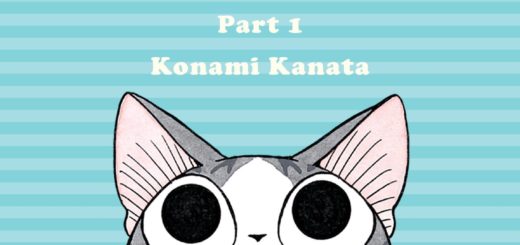
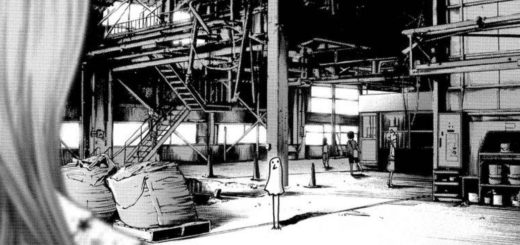
I think that there’s just general rivalry and misunderstanding in all spheres. Rugby fans mock football fans. I’ve seen Americans mock field hockey, showing they have never seen a proper match where women will suffer head injuries, blood all over the pitch, and then come back on during the second half to score a winning goal. Clearly far superior to baseball and it’s lack of contact.
My DnD friends don’t understand why I had the football results on my phone when our game clashed with the Euros. They look blankly when I talk about anime and manga, and I look equally blank when they talk about video games!
It’s just different tribes who don’t understand each other and I do believe that sport remains the more socially acceptable of passions but even then we’re limited to WHAT that sport is. EG. My Brother-in-law is mocked for loving Women’s Football even though it is the EXACT SAME SPORT as the one plastered all over the Telly each Saturday, just with more sports bras.
I admit to mocking him for liking cricket but that’s just how it should be.
Your talk about what is and is not too weeby to recommend to Chip had me wondering: What Manga do you LOVE but for whatever reason you would never recommend it? For example, I love Cardcaptor Sakura! But could never recommend it due to all the creepy age differences. I don’t care that he’s your soulmate, you’re 10 and he’s your teacher being secretly engaged is grounds for arresting him.
I’d also like to give a quick shout out to “A Sign Of Affection” by suu Morishita mostly because the lettering is really great and a wonderful example of how good lettering can enhance narrative but all the Shojo Fans want to talk about how cute the main couple are and not kerning… but I think Chip WOULD care about kerning! Also, I don’t believe you’ve covered series featuring a disabled protagonist outside a fantasy setting? (Edward Elric is actually pretty good rep from what I’ve heard but also his brother is a giant suit of armour and he can make clothes out of dirt) Neither of the Mangaka are Hard-of-hearing but they DO use and credit a consultant who IS deaf! I’ve yet to see a review by a Deaf person but Hard-of-Hearing people have said it does a good job! It’s SUPER Shojo but all the tropes feel EARNED here =)
“You’re one of us,” and “manga for manga people.”
And, also, there are entire magazines based around “this is who otaku are.” Not just series – specific, but like COMP ACE which basically manga for gamers about gamers gaming. The entirely of Lucky Star which was so massively popular is based around the idea,” Wow! this girl is a hardcore gamer like me” and…that’s about it. It was for deep otaku, not of a specific series but of the lifestyle -buying multiple copies of a manga to get the different bonus drawings, lining up to get a game. Typical nerdy stuff, really, but that “stuff” is what folks build a life and community around.
Deb’s comment about being in the closet at work made me laugh. I’m not in the closet, but….because my coworkers understand literally nothing about what I do, I might as well be.
Sometimes I send them links to presentations or articles I’ve done and they send me ” Manga is the new comics” links back. ^_^ But I will say, having an otaku wife (who loves Sailor Moon to literal tears) is awesome. We both have our passions, but there’s never an argument about whether getting that acrylic standee is “worth it.”
Another wonderful episode, it’s better than Taco Tuesday. ^_^
Good episode, I remember reading the first book of Wotakoi a long time ago, and then I watched and enjoyed the anime when it came out, but I haven’t gotten around to the rest of the manga yet. Also feel I should note that Blue Period isn’t a shonen manga, it runs in Monthly Afternoon.
Fantastic episode. I’m kind of glad the book wasn’t a hit across the group, because that was a pretty lively debate, and I laughed out loud a few times. This book doesn’t really strike me as my thing, especially trying to parse Hatsune Miku deep cuts. But I’m glad some of you enjoyed it and get something out of it. I work for a games company, so I’m surrounded by co-workers who let their otaku flag high and proud all the time. I suppose if I worked for a Japanese bank, everyone would be more closeted.
The dichotomy/rivalry/enmity between jocks and nerds was very real when I was in high school in the ’90s. But, like you pointed out, everyone is otaku about something, be it sports, or comics, or stamp collecting. (What’s that joke about fantasy football being D&D for jocks?) There’s three things about jocks, though, that always gave them the upper hand. 1, sports were the original pop culture in America, and therefore much more accepted. To this day every newspaper STILL has a dedicated daily sports section, but everything else is relegated to a once-a-week arts and entertainment insert. If you’re lucky, they might highlight a comic book once every three months. 2, sports have always been viewed as a social pastime, whether from those playing (you need at LEAST two people for almost any sport) and for those watching, Perhaps that’s why board games and D&D weren’t considered social enough, because they couldn’t have an audience. (Chess, i would argue was nerdy because it was considered high-brow nerdy, not comics and video games nerdy.) With esports in ascendence and online audiences the norm, perhaps that distinction is blurring. But until The New York Times starts listing the latest League of Legends rankings next to the MLB, I won’t say they’re on par. And finally, 3, appearances. People always judge others by looks, and i think that’s the key separator between jocks and nerds. No offense to the kid trying to watch the game in that College Humor video, but he doesn’t look like a jock. I knew tons of kids in high school who were super big into sports, but because they were in band, or short, or too skinny, they were bullied and treated like nerds. But exceptions were made, from time to time. Overweight kid who likes reading and wears a shirt with buttons? Total nerd. Overweight kid who wears sweatshirts and is a star varsity wrestler? Popular jock. Unless that kid in the video could throw a 100 mph fastball, I doubt he’d be treated like a jock.
But I hope that’s changing! I saw it in college with the rise of the internet and the ubiquity of computers. Nerds who could set up a LAN party for everyone to play Doom at the same time were in demand. Even in Japan I seen changes. Back in the day, being known as an otaku was the worst possible things. I remember being perplexed that you could not find anime-themed clothing in Japan, even at the hardcore anime shops, because no one would ever think to wear that in public. Now Uniqlo–and you can’t go more mainstream than Uniqlo–has One Piece and Gundam themed fashion collections that I see what I would call average people wearing. I see people sporting Star Wars and Marvel t-shirts unironically. And in some ways it’s nice to see that people no longer have to hide their interests in public. The downside of the popularity of nerd culture, however, is toxic fandom, something I think was borrow from the jocks (Soccer hooligans anyone?), and to me that’s the real tragedy.
Well discussed episode! This was one of the first books I’ve read since listening that I didn’t really like, for a lot of the same reasons that Chip mentions. The jokes just weren’t funny to me and I felt like none of the characters really had chemistry. Won’t continue onto volume 2 this time!